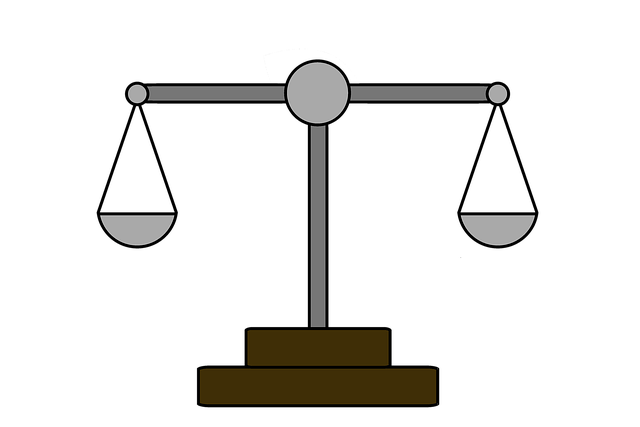The text explores popular non-surgical fat reduction techniques, highlighting CoolSculpting and surgical liposuction. CoolSculpting uses cryolipolysis to freeze and eliminate fat cells without incisions, offering minimal downtime and suitable for problem areas. Liposuction, though more invasive, physically removes fat through incisions, providing more dramatic results but with potential risks and recovery time. A non-surgical fat reduction comparison reveals CoolSculpting's advantages in terms of safety, speed to resume activities, and targeted area treatment, while liposuction remains effective for extensive fat distribution. Consulting medical professionals is vital to determine the best method based on individual needs and health considerations.
Considering non-surgical fat reduction options? Discover the pros and cons of CoolSculpting vs. Surgical Liposuction in this comprehensive comparison. Learn how CoolSculpting, a non-invasive body contouring method using cryolipolysis, stacks up against traditional surgical liposuction. Explore factors like effectiveness, safety, patient suitability, recovery times, and more. Make an informed decision with our detailed guide for your ideal fat reduction journey.
Understanding Non-Surgical Fat Reduction Techniques

Non-surgical fat reduction techniques have gained significant popularity in recent years, offering a less invasive alternative to traditional surgical procedures like liposuction. These non-invasive treatments aim to target and reduce stubborn fat deposits without incisions or general anesthesia. CoolSculpting and surgical liposuction are two prominent players in this market, each with its own unique approach.
One of the key advantages of non-surgical methods is their ability to freeze or break down fat cells, leading to gradual fat reduction over time. Unlike surgery, these procedures are usually well-tolerated with minimal downtime. In a non-surgical fat reduction comparison, factors like treatment duration, side effects, and results vary between CoolSculpting and liposuction. Understanding these techniques is essential for individuals considering alternatives to surgical procedures while striving for a slimmer, more contoured body.
CoolSculpting: A Non-Invasive Approach to Body Contouring

CoolSculpting represents a groundbreaking non-surgical fat reduction technique that has taken the beauty industry by storm. Unlike traditional liposuction, which involves invasive procedures and recovery periods, CoolSculpting offers a safe and effective way to sculpt your body without needles or scalpels. This innovative technology uses controlled cooling to target and eliminate stubborn fat cells in problem areas such as the abdomen, thighs, and arms.
By freezing and destroying fat at the cellular level, CoolSculpting prompts your body’s natural response to get rid of these cells during its routine waste elimination processes. With minimal downtime and no significant side effects, this non-surgical approach has gained immense popularity in the quest for a slimmer, more contoured figure. It’s an ideal choice for individuals seeking a fat reduction method that aligns with their active lifestyles and avoids the invasiveness of surgical procedures.
Surgical Liposuction: Traditional Methods and Considerations

Surgical Liposuction, a traditional method for fat reduction, involves the use of specialized tools to suction excess fat from specific areas of the body. This procedure is often considered for targeted fat loss, particularly in challenging zones like the abdomen, thighs, or love handles. During the operation, a surgeon makes small incisions and inserts a cannula, a thin tube with a suction mechanism, into the target area. The cannula breaks up fat cells, which are then sucked out, leaving behind smoother, contoured skin.
While effective, it’s important to consider the implications of Surgical Fat Reduction. This includes surgery-related risks, such as infection, bleeding, and potential scarring. Additionally, patients typically face downtime for recovery, making it a more invasive option compared to non-surgical alternatives like CoolSculpting. As with any surgical procedure, careful consultation with a qualified medical professional is essential to understand the process, expectations, and potential outcomes in the context of a Non-Surgical Fat Reduction Comparison.
Comparison: Effectiveness and Safety of the Two Procedures

In terms of effectiveness, both CoolSculpting and surgical liposuction are renowned for their fat reduction capabilities. However, a key distinction lies in their approaches; CoolSculpting offers a non-surgical fat reduction method utilizing cryolipolysis to freeze and eliminate fat cells, while surgical liposuction involves making incisions and suctioning out targeted fat. In terms of safety, CoolSculpting is generally considered less invasive, making it an appealing option for those seeking a quicker recovery and fewer risks associated with surgery. Surgical liposuction, despite its effectiveness, carries the potential for complications such as scarring, bleeding, and anaesthetic risks, which are largely absent in CoolSculpting procedures.
When comparing these two methods, a non-surgical fat reduction approach like CoolSculpting may be preferable for individuals who desire a minimally invasive solution with faster recovery times. Conversely, surgical liposuction maintains its place as a highly effective method for targeted fat removal, suitable for patients with specific body areas requiring more aggressive treatment.
Patient Suitability and Expected Outcomes

When considering non-surgical fat reduction options, understanding patient suitability is key. CoolSculpting and Surgical Liposuction cater to different needs and profiles. CoolSculpting, a non-invasive procedure, is ideal for individuals seeking minimal downtime and a safe approach to fat reduction. It’s effective on specific problem areas like love handles, belly fat, and bra bulge, making it appealing for those with localized fat deposits. The treatment involves freezing fat cells, which are then naturally eliminated from the body over time.
On the other hand, Surgical Liposuction is recommended for patients requiring more significant fat reduction or body contouring. It’s a surgical procedure that physically removes fat cells from targeted areas. This makes it suitable for those with more extensive fat distribution and who aim for dramatic, long-lasting results. As with any medical procedure, consulting with qualified professionals to determine the best course of action based on individual goals and health considerations is essential.
Post-Treatment Care and Recovery Periods

After undergoing either CoolSculpting or Surgical Liposuction, post-treatment care and recovery periods differ significantly. CoolSculpting, being a non-surgical fat reduction method, involves minimal downtime. Patients can resume their regular activities within a few days, experiencing little to no discomfort. Ice packs may be recommended to reduce any temporary soreness in the treated areas. In contrast, surgical liposuction requires a more extensive recovery period. It usually takes several weeks for swelling and bruising to subside, during which time patients must adhere to specific rest and activity restrictions. A liquid or soft diet is often advised post-surgery to aid healing.
The recovery journey varies based on individual factors, but generally, non-surgical options like CoolSculpting offer a quicker return to daily routines. Surgical liposuction, while providing more significant results, demands patience and careful management during the healing process. Patients should closely follow their healthcare provider’s instructions for optimal recovery outcomes in this non-surgical fat reduction comparison.
